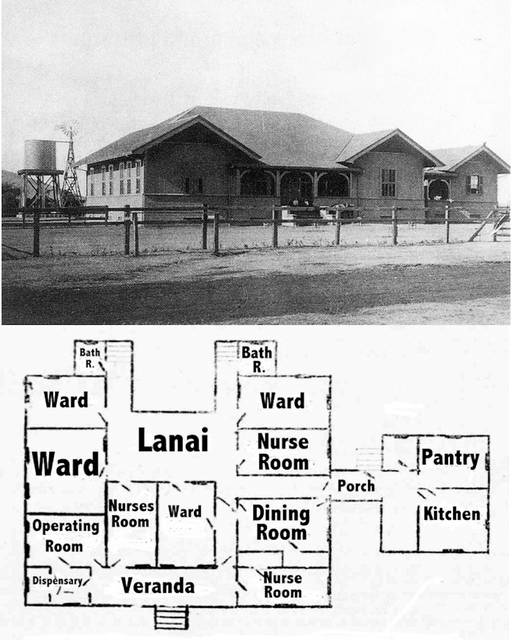In January 1900, Herb and Will Young started Young Brothers. They purchased a small launch, the Billy, and made a business running lines for the ships, delivering foodstuffs to the crews, and ferrying passengers. They were joined in October by their younger brother, Jack Young.
“Honolulu, which for so many years had served sailing vessels with rowboats and native canoes, was quick to take up the power launch, and we went in and out of the harbor with passengers, meat, mail and the Customs men.”
“The Honolulu waterfront of thirty years ago was known throughout the Pacific. Ships from around the Horn were loaded with general merchandise, railroad and sugar mill supplies; the vessels from California had live stock on the decks and were full of farm produce from the Coast; ships from Newcastle, Australia, held cargoes of coal for the sugar plantations.”
“Here they would discharge their cargoes, and take full loads of sugar for California, or around the Horn to Delaware Water Gap.”
“The finest ships afloat came into Honolulu, everything from the trimmest bark to the full-rigged ships. There were not enough loading wharves for them all, and many were forced to anchor in Rotten Row inside the harbor until their turn came.”
“Sailors coming ashore always had a payroll. They went to live in boarding houses until putting out to sea again, and invariably demanded and got advance wages, always spent before they left.”
“The town, of perhaps ten thousand, was always active. Rum and gin and whiskey flowed freely. Native liquors were as popular with many as whole shiploads of gin from Holland.”
“Kanaka women could drink the gin down just like water, and frequently did. The square-bodied gin bottle was as well known on the waterfront wharves as the brown-skinned Kanakas, and cases of gin would be stacked as high as the wharf roofs.”
“The boarding-house men saw to it that sailors were kept supplied with liquor, so that by the time their shore leave was up a fine bill held them ashore as hostages. Captains cordially hated the boarding-house keepers, for when sailing time came, blood money at so much per head was the only sure way to retrieve their sailors, drunk or sober.”
“Our tug, loaded with outward bound crews, made short work of delivering its hilarious cargo to the ships, where, in a few hours, the men would wake with big heads. But a fair wind soon blew the cobwebs out of their brains.”
“Young Brothers’ Boathouse, where we lived, near the harbor entrance, was the center of information along the waterfront. From this point of vantage, everything going in or out, or approaching, was seen by those of us on duty at the Boathouse.”
“Two or three launchmen and a couple of deckhands were sure to be found about the place besides ourselves, and we were on twenty-four-hour service with the Customs people and Immigration Service.”
“In front were moored our boats, the Fun, the Billy, the Brothers and the Huki Huki. Alongside was warped the Water Witch, a fifty-footer used for Customs work. This boat, brought down by Archie Young, for whom we went to work at first on Oahu, is still in service after thirty-two strenuous years.”
“Before the advent of radio, it was our six-inch telescope atop the lookout on the Boathouse which kept the harbor informed of incoming steamers as far away as Pearl Harbor.”
“From the first, our telephone was constantly ringing; the newspapers, hotel guests, Customs men, wanting information of every sort.”
“While we were carrying on our various waterfront activities, delivering supplies to all ships at anchor every day we had an opportunity of making friends with all the captains who came to Honolulu, and slowly became a part of the life of the harbor.”
Then, “A change had come over the firm of Young Brothers”.
“Herb, independent and capable, had been involved in so many differences of opinion that he found it best suited to his own interests and those of the business to get out. He went to California, becoming associated with the growing tuna fishing industry around San Diego, where he was captain of the big power schooner Elsinore for eight or ten years.”
“Honolulu by this time was no longer the town of our early days, and Big Business was making itself felt even in the towboat business.”
“Young Brothers was incorporated [1913], and for the first time someone outside the family directed activities. As there seemed to be no immediate need for me among my old associates, I began to cast about for an opportunity to realize my hopes that shark hides could be made commercially useful.”
Will preferred to pursue his fascination with sharks and eventually left the islands for good in 1921 to become a well-known international shark hunter.
William left Young Brothers in the hands of Jack, the last founding member of the company to remain in Hawai‘i. (Lots of information here is from William Young’s book Shark Shark, Young Brothers: 100 Years of Service, and a Young family background and genealogy.)














